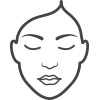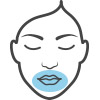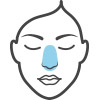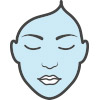Mr Andrew Douglas, Consultant Facial, Reconstructive and Cosmetic Surgeon
Mr Andrew Douglas is a specialist facial surgeon in London. He gained degrees in medicine and dentistry before undertaking general and specialist surgical training in London, Oxford and Manchester before qualifying as a consultant. Before taking up an NHS consultant post he undertook additional training in paediatric cleft lip and palate surgery. He continues to visit conferences and experts around the world in order to keep up to date with the very best techniques.
Mr Douglas specializes in all aspects of facial surgery: skin cancer, trauma, corrective surgery, facial deformity as well as cosmetic surgery. His unique training purely in facial surgery including a thorough understanding of dentistry mean he can assess, diagnose and treat not just the skin and soft tissues, but also the bones of the face. He will ensure that you undergo the most appropriate procedure and not the most obvious or popular. This may include combining hard and soft tissues as well as incorporating non-surgical techniques too. If it is necessary, Mr Douglas will work with an orthodontist or dentist to help you get the very best outcome.
1:46

0:11
In 2016 he published a new technique in facial reconstruction for patients with advanced oral cancer. He has continued to be a surgical innovator helping to establish new minimally invasive techniques in major facial trauma to reduce scarring. It is this pioneering and innovative approach that he approaches cosmetic surgery to maximize results with the least scarring and side-effects.
Mr Douglas is experienced in 3D digital imaging and planning
Mr Douglas has taught non-surgical cosmetic facial procedures for over a decade and had work recognized in the national press including a headline story on Protox, a word he coined for patients looking to have Botox for professional reasons, such as to look less stern, rather than for anti-aging purposes. He now undertakes a wide variety of cosmetic procedures to the face and neck.
Prior to his career in medicine, Mr Douglas was a professional musician. As the worlds youngest church organist aged 8, he went on to gain music scholarships and perform internationally including for heads of state before becoming organ scholar at Gloucester Cathedral aged 16. He has also been a successful oarsman wining at top domestic regattas. He continues to row as well as coach.












